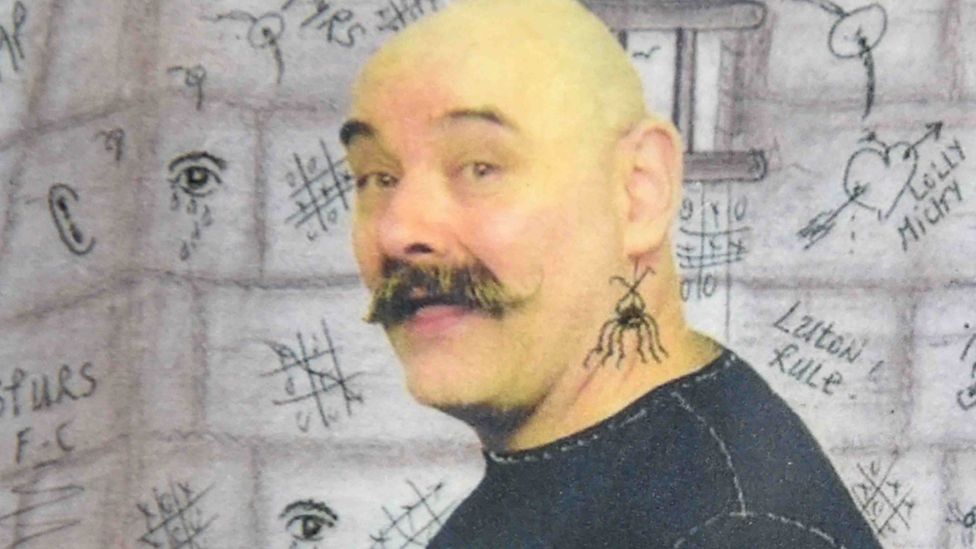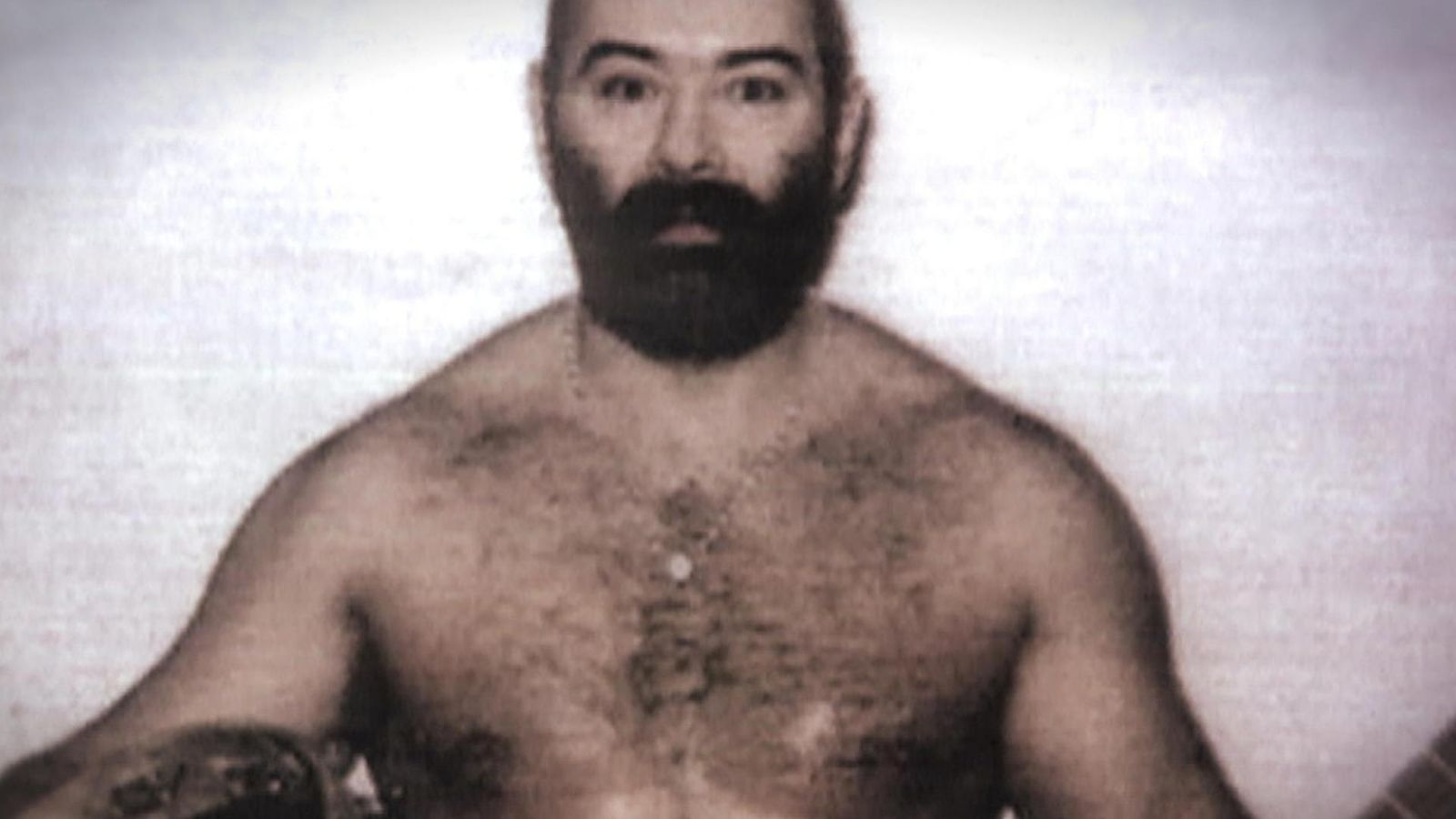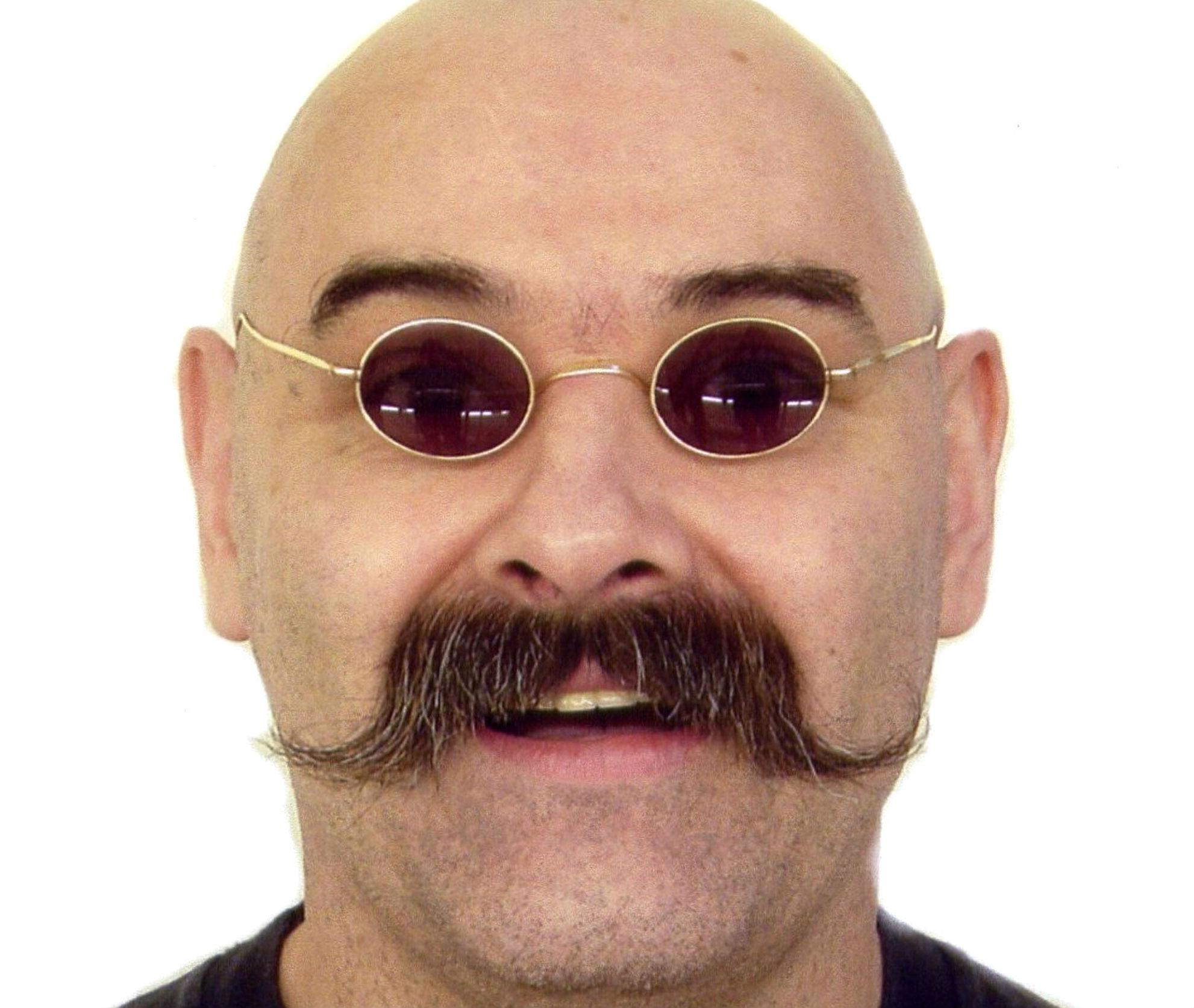Is freedom within reach for a man synonymous with Britain's most brutal incarceration? Charles Bronson, now known as Charles Arthur Salvador, could potentially be released later this year, marking a pivotal moment in a life defined by violence, art, and decades behind bars.
Born Michael Gordon Peterson on December 6th, 1952, in Luton, England, Charles Bronson's story is a complex tapestry of a troubled youth, petty crimes that escalated into armed robbery, and a descent into a life of notoriety within the British penal system. The second of three brothers, growing up in a respectable family with a father who ran a decorating business, offered little indication of the path Bronson would ultimately tread. His initial incarceration in 1974 for armed robbery was only the beginning of a decades-long journey through various prisons, marked by hostage-taking, assaults on prison staff and fellow inmates, and a continuous struggle against the system itself.
Bronson's name has become synonymous with violence and rebellion within the prison system. Incidents like the 1994 hostage situation involving a prison librarian, where he bizarrely demanded an inflatable doll, a helicopter, and a cup of tea as ransom, cemented his image as an unpredictable and dangerous figure. Four years later, at Belmarsh Prison in London, he took three inmates hostage, further solidifying his reputation as a man willing to use extreme measures.
- Fath Properties Cincinnati Apartments More Youll Love
- Dexter Resurrection Casting News Is Here Remar Returns
His time in solitary confinement has been extensive, contributing to the mystique and infamy surrounding him. Despite his violent past, Bronson has also expressed himself through art, a creative outlet that perhaps offers a glimpse into the man behind the menacing facade. However, his artistic endeavors have often been overshadowed by his violent actions and the fear he inspires.
A public parole hearing is scheduled for early March, where a panel will determine if Charles Arthur Salvador is fit for release. This hearing represents a culmination of nearly 50 years behind bars and numerous failed attempts at parole. The parole board has previously denied his release and rejected his requests to be moved to an open prison. This upcoming hearing, being his ninth attempt for freedom, could be his "last bid for freedom", as reported after his original sentencing.
The decision before the parole board is not merely about Charles Bronson's individual fate; it raises broader questions about the treatment and rehabilitation of violent offenders. His story prompts a critical examination of the psychological factors that contribute to criminal behavior and the effectiveness of the penal system in addressing those factors. With reported 24% prisoners and 31% jail inmates having major depressive disorder. Charles Bronson's journey can serve as a case study for penal system as well.
- Mary Travers Net Worth Untold Story Of A Folk Icons Fortune
- Adeyemi Bandele Iyanla Vanzants Exhusband Life Facts
Over the years, Bronson has received limited compensation for incidents within the prison, such as 200 for broken glasses. However, these minor compensations pale in comparison to the larger narrative of violence, confinement, and the ongoing struggle for release.
Charles Bronson's life has even inspired a film, with Tom Hardy portraying him in a drama based on his true story. The film offers a glimpse into the brutal world Bronson inhabited, portraying him as an almost larger-than-life figure within the English penal system. However, such portrayals often simplify the complexities of a man whose life has been shaped by violence, isolation, and a desperate yearning for freedom.
As the parole hearing approaches, the question remains: can a man who has spent nearly half a century behind bars, a man labeled "Britain's most violent prisoner," truly be rehabilitated? Or will Charles Bronson forever be defined by his past actions and the fear he has instilled for so long?
The case of Charles Arthur Salvador is a stark reminder of the challenges and complexities of the criminal justice system. His story invites us to consider not only the punishment of offenders but also the potential for rehabilitation and the underlying psychological factors that contribute to violent behavior. As he embarks on what may be his final bid for freedom, the nation watches, waiting to see if Charles Bronson will finally walk free or remain a permanent fixture of Britain's prison history.
| Category | Information |
|---|---|
| Full Name | Charles Arthur Salvador (born Michael Gordon Peterson; Formerly known as Charles Ali Ahmed) |
| Birth Date | December 6, 1952 |
| Birth Place | Luton, England |
| Nationality | British |
| Occupation | Artist, Criminal |
| Known For | Being Britain's "most violent prisoner," notorious incidents within the prison system. |
| Incarceration Start | 1974 (originally for armed robbery) |
| Key Incidents |
|
| Parole Status | Repeatedly denied parole; public parole hearing due in early March. |
| Family | Father: Joe (ran a decorating business). Second of three brothers. |
| Additional Details | Has spent a significant portion of his prison time in solitary confinement. Also known for his art created while incarcerated. |
| Reference Link | GOV.UK (Official Government Website) |
Charles Bronson's life is a paradox, a blend of violence and artistic expression. From his early days engaging in petty crime to his current status as a symbol of chaos within the British penal system, his story is a testament to the system's failures and the human capacity for transformation and rebellion.
Born into a respectable family, Michael Gordon Peterson seemed destined for a life of normalcy. However, a series of missteps and increasingly violent acts led him down a different path, one that would see him reinvent himself as Charles Bronson, a name synonymous with brutality and defiance.
Bronson's initial sentence for armed robbery was relatively short, but his propensity for violence within prison walls quickly extended his stay. He became notorious for attacking guards, taking hostages, and generally disrupting the peace of the institutions he inhabited. These actions, while undoubtedly criminal, also served as a form of protest against a system he perceived as unjust and oppressive.
The hostage incidents, in particular, stand out as examples of Bronson's volatile nature. His demands, often bizarre and seemingly irrational, underscored his desperation and his willingness to resort to extreme measures. These incidents not only garnered media attention but also solidified his image as an unpredictable and dangerous figure.
Despite his violent tendencies, Bronson has also demonstrated a creative side, expressing himself through art and writing. His artwork, often characterized by its raw intensity and unflinching portrayal of prison life, offers a glimpse into the mind of a man who has spent much of his adult life confined within concrete walls.
Bronson's story is not just about violence and rebellion; it is also about the psychological toll of long-term incarceration. The isolation, the lack of freedom, and the constant threat of violence can have a profound impact on an individual's mental state, potentially exacerbating existing issues and leading to further acts of aggression.
His long stretches in solitary confinement, intended to control his behavior, may have inadvertently contributed to his continued violence. The lack of social interaction and sensory stimulation can lead to a deterioration of mental health, making it even more difficult for individuals to reintegrate into society.
The British penal system has struggled to contain and rehabilitate Charles Bronson. Traditional methods of punishment and control have proven ineffective in modifying his behavior, leading some to question the system's ability to deal with individuals who exhibit extreme violence and defiance.
The upcoming parole hearing represents a critical juncture in Bronson's life. After nearly five decades behind bars, he has the opportunity to argue for his release and demonstrate that he is no longer a threat to society. However, the parole board will undoubtedly scrutinize his past actions and assess his current mental state to determine whether he poses a risk to the public.
The decision facing the parole board is not an easy one. Releasing Charles Bronson would undoubtedly raise concerns about public safety, given his history of violence and unpredictable behavior. However, keeping him incarcerated indefinitely would also represent a failure of the penal system to rehabilitate an individual who has spent the majority of his life behind bars.
Ultimately, the case of Charles Bronson highlights the need for a more nuanced approach to criminal justice, one that takes into account the psychological factors that contribute to violent behavior and focuses on rehabilitation rather than simply punishment. His story serves as a reminder that even the most notorious offenders are still human beings with the potential for change, and that the penal system has a responsibility to provide them with the tools and support they need to reintegrate into society.
It's also worth noting the parallel between Charles Bronson and fictional characters like Mike Kovacs, portrayed by Charles Bronson lookalike Bronzi. These narratives, while fictional, often tap into the public's fascination with the darker side of human nature and the brutal realities of prison life. They explore themes of survival, justice, and the struggle against oppression, resonating with audiences who are drawn to stories of individuals who defy the odds and challenge the status quo.
In these fictional portrayals, prison is often depicted as a microcosm of society, where power dynamics are amplified and the line between right and wrong becomes blurred. The characters who inhabit these worlds are forced to make difficult choices in order to survive, often resorting to violence and deception.
The character of Mike Kovacs, for example, finds himself thrust into a deadly prison as an undercover informant, tasked with uncovering a drug smuggling operation. To succeed, he must navigate the treacherous landscape of the prison system, facing corrupt guards, ruthless inmates, and an evil warden.
These stories, while entertaining, also raise important questions about the role of prisons in society. Are they merely institutions of punishment, or do they have a responsibility to rehabilitate offenders and prepare them for reintegration into the community?
The case of Charles Bronson is a reminder that the line between reality and fiction is often blurred when it comes to crime and punishment. His life story, with its dramatic twists and turns, has captured the public's imagination for decades, inspiring books, films, and countless media reports.
As he approaches what may be his final bid for freedom, the world watches with bated breath, wondering whether Charles Bronson will finally be able to leave his violent past behind and embrace a new chapter in his life. Or will he remain forever defined by his reputation as Britain's most notorious prisoner?
The Levy County Sheriffs Office in Bronson, Florida (9150 NE 80th Avenue, Bronson, Florida 32621) serves as a contrasting reminder of law enforcement's role in maintaining order, a world away from the chaos and confinement that have defined Charles Bronson's existence. Their administration and law enforcement bureaus are tasked with upholding the law and ensuring the safety of the community.
Ultimately, the story of Charles Bronson is a complex and multifaceted one, raising profound questions about crime, punishment, and the human capacity for both violence and redemption. As he stands on the precipice of potential freedom, his fate remains uncertain, and the world waits to see what the future holds for this enigmatic and controversial figure.
- Remembering Richard Blum A Legacy Of Impact Influence
- Nia Sioux Frazier Dance Moms Stars Life Career 2024 Update


